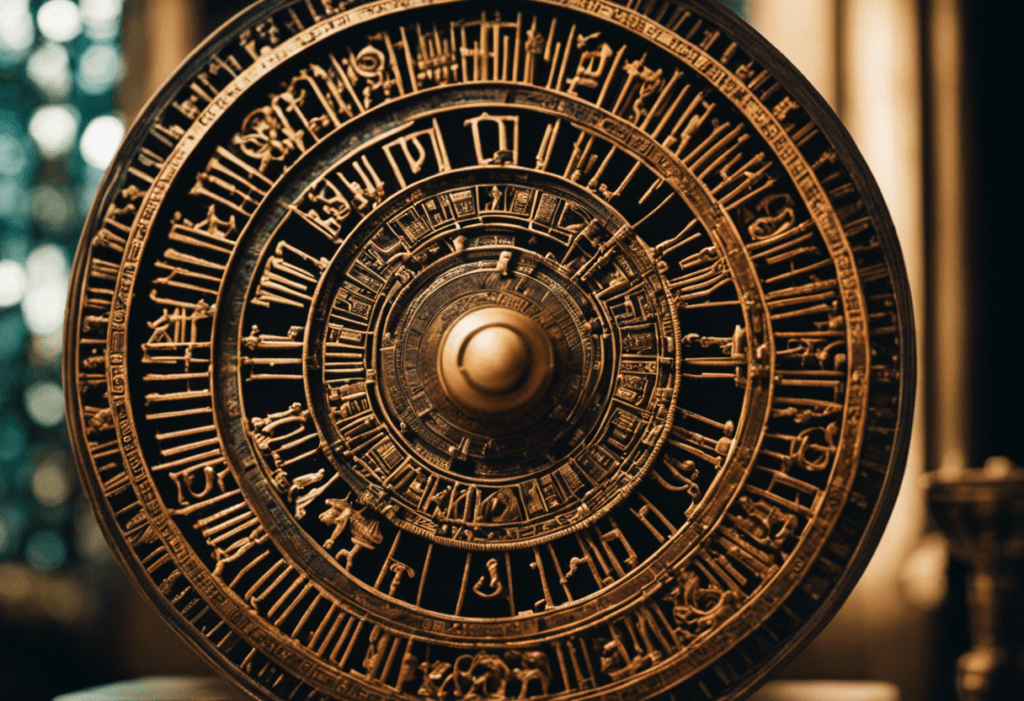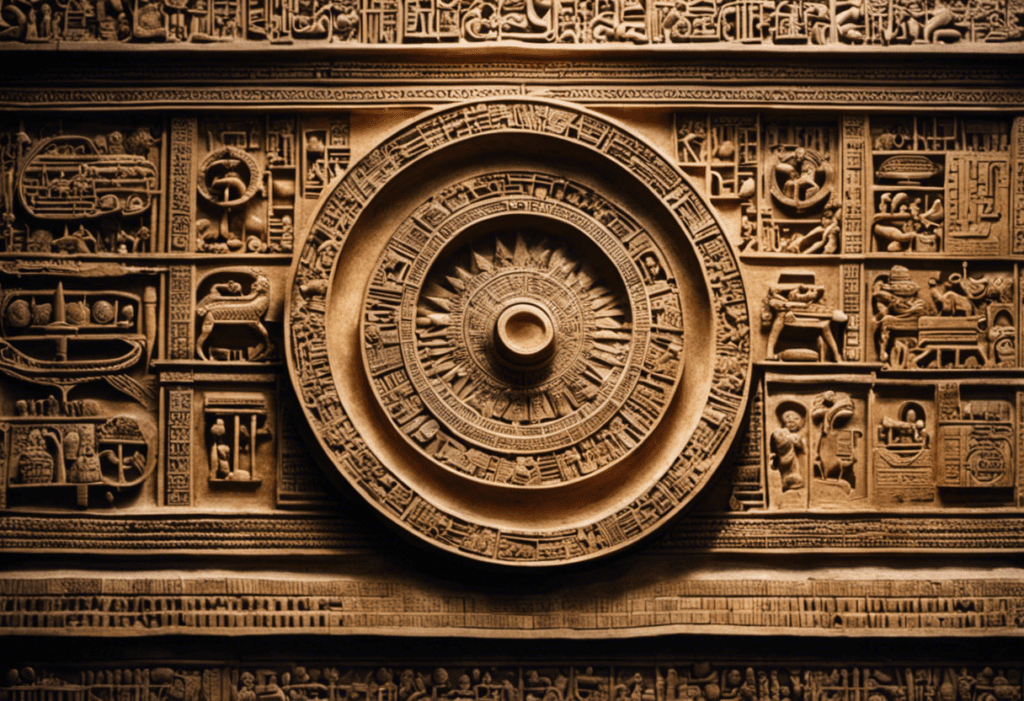Step back in time and delve into the enigmatic world of the Babylonian civilization, where the celestial dance of the stars dictated the rhythm of their lives.
This introductory article uncovers the origins and evolution of the Babylonian calendar, an ancient system that paved the way for modern timekeeping.
From its humble beginnings to its profound influence on the ancient world, we will explore the key features, changes, and adaptations that shaped this remarkable calendar system.
Join us on this journey of discovery as we unravel the mysteries of the Babylonian calendar.
Key Takeaways
- The Babylonian calendar originated around 2000 BCE and evolved from a lunar-based system to a lunisolar calendar.
- The calendar was closely tied to Babylonian society’s cultural, social, and economic aspects.
- Celestial events played a significant role in predicting natural phenomena and determining favorable times in the Babylonian calendar.
- The Babylonian calendar had a profound impact on religious rituals, agriculture, legal and economic affairs, and influenced subsequent calendars and the way humans track time.
The Ancient Mesopotamian Civilization
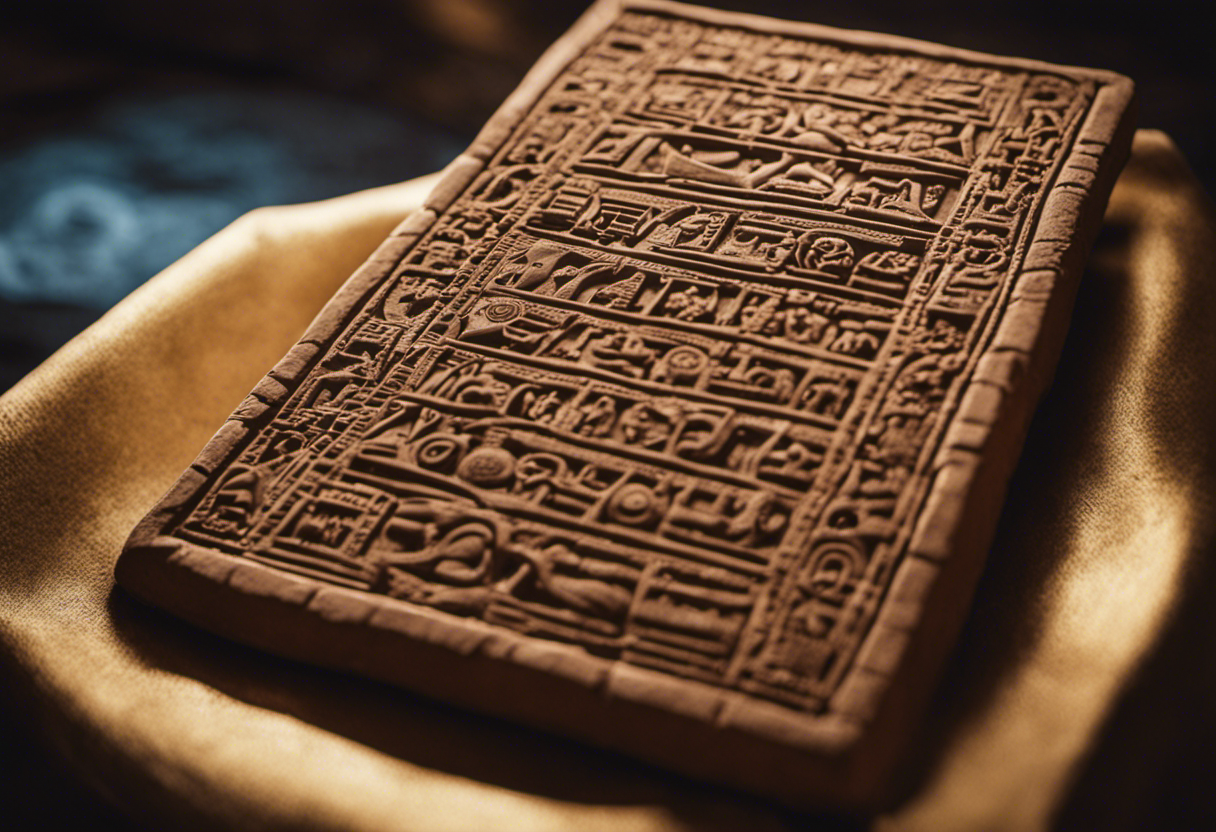

The study of irrigation techniques utilized by the Ancient Mesopotamian Civilization highlights their advanced understanding of water management.
The ancient Sumerians, who inhabited Mesopotamia, were pioneers in developing sophisticated irrigation systems to support their agricultural activities. They recognized the importance of controlling water flow to ensure the success of their crops and prevent flooding.
The Sumerians constructed an extensive network of canals and dikes to divert water from rivers to their fields. They were also skilled in the construction of reservoirs and dams, which allowed them to store water during periods of excess and release it during dry spells. These techniques not only improved crop yields but also enabled the cultivation of previously arid lands.
Furthermore, the advanced understanding of water management in Mesopotamia extended beyond agriculture. The ancient Mesopotamians also used water for religious and astrological purposes. They believed that water was a powerful medium through which they could communicate with the gods and seek divine guidance. Water rituals and purification ceremonies were an integral part of their religious practices.
In addition, water played a significant role in Mesopotamian astrology. The ancient Mesopotamians believed that celestial events, such as eclipses and planetary alignments, influenced human affairs. They closely observed the movements of celestial bodies and interpreted their significance, often relating them to natural phenomena, including floods and droughts. Through their understanding of water and its relationship with the cosmos, the ancient Mesopotamians developed a complex system of astrology that shaped their society and culture.
The Birth of the Babylonian Calendar
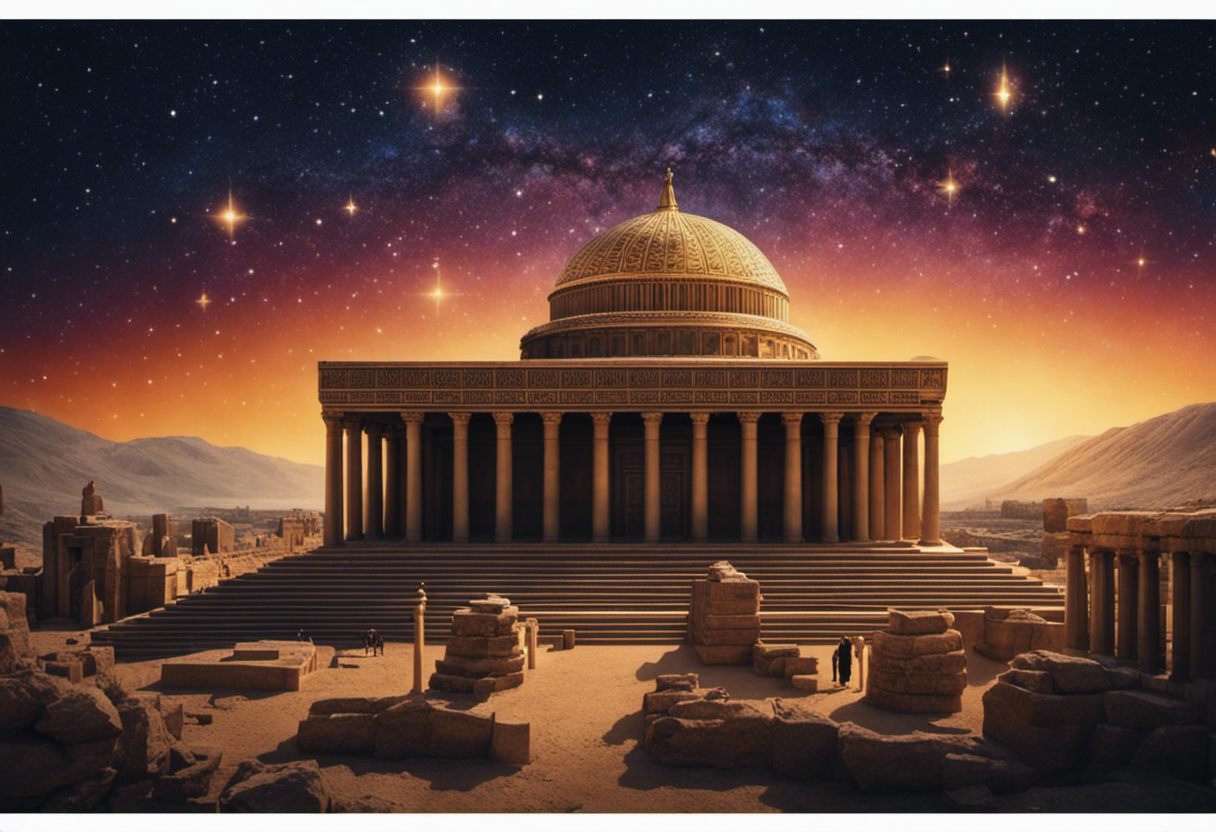

The birth of the Babylonian calendar marks a significant milestone in the history of timekeeping and cultural development. With its origins dating back to ancient Mesopotamia, the Babylonian calendar evolved from a lunar-based system to a lunisolar calendar, incorporating both lunar and solar cycles.
This transformation was influenced by the Babylonians’ agricultural practices and their observation of celestial events, demonstrating the close relationship between the calendar and the cultural, social, and economic aspects of Babylonian society.
Calendar’s Historical Significance
An article discussing the calendar’s historical significance explores the birth of the Babylonian calendar and its evolution over time.
The Babylonian calendar, developed in ancient Mesopotamia around 2000 BCE, played a crucial role in the lives of the Babylonians. It was a lunisolar calendar, meaning it was based on both the cycles of the Moon and the solar year.
The Babylonians believed that celestial events held great importance in predicting natural phenomena and determining favorable times for various activities. This calendar had a significant impact on Babylonian society, influencing religious rituals, agriculture, and the administration of legal and economic affairs.
The Babylonian calendar’s historical context and cultural significance reveal its importance as a foundational system that influenced subsequent calendars and shaped the way humans track time.
Cultural Influences on Development
Cultural influences and the development of the Babylonian calendar are closely intertwined, as the calendar’s birth and evolution were shaped by the beliefs, practices, and societal needs of ancient Mesopotamia.
The Babylonians, who were skilled astronomers and mathematicians, observed the celestial bodies and developed a calendar system that reflected their understanding of the natural world. Their calendar was based on a lunar-solar cycle, with months determined by the phases of the moon and intercalary months added periodically to align with the solar year.
This system allowed the Babylonians to track the passage of time and make predictions about agricultural cycles, religious festivals, and celestial events. The calendar also played a vital role in governmental and administrative affairs, facilitating societal adaptations and the organization of economic activities.
Overall, the cultural influences on the development of the Babylonian calendar are evident in its structure, purpose, and practical applications within ancient Mesopotamian society.
Key Features of the Babylonian Calendar
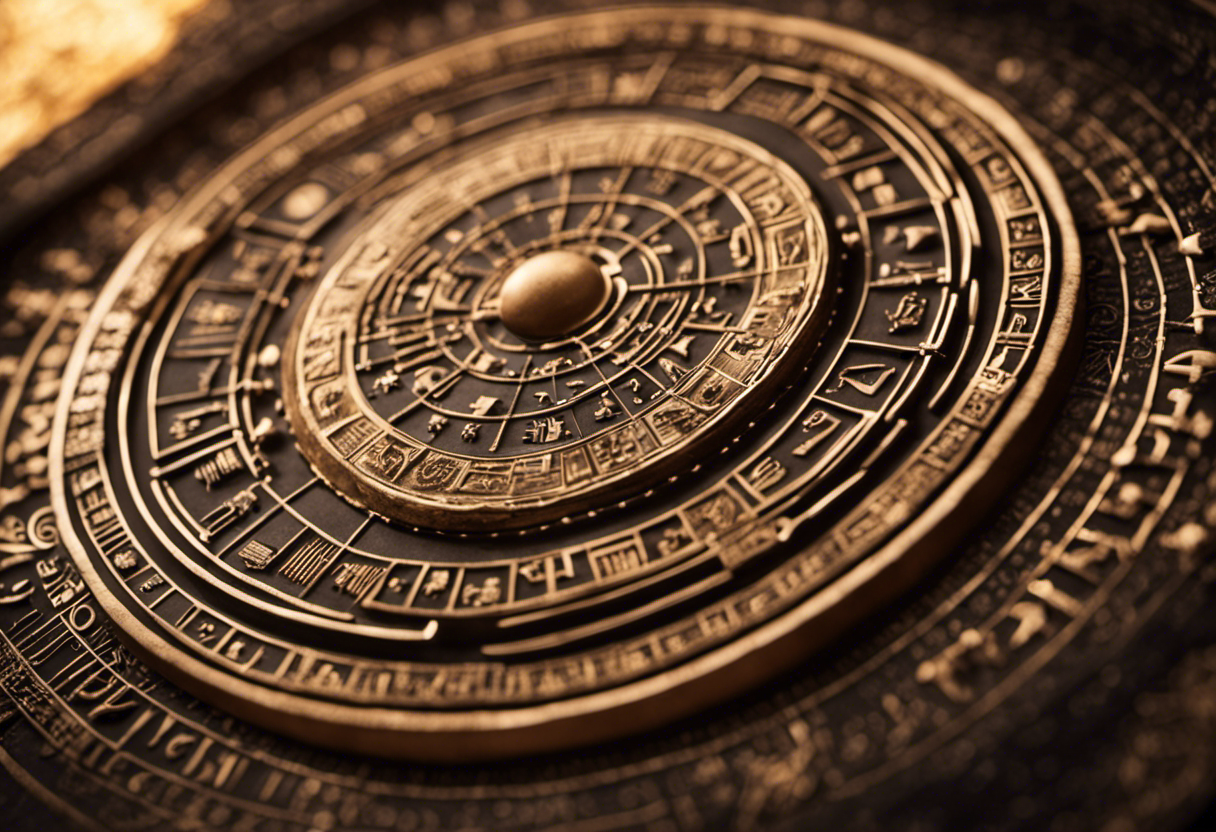

The Babylonian Calendar was a lunar-based calendar system that played a significant role in the daily lives of the ancient Babylonians.
One key feature of this calendar was its reliance on lunar-based calculations, which resulted in months of alternating lengths.
This lunar influence also shaped the agricultural practices of the Babylonians, as they used the phases of the moon to determine the optimal time for planting and harvesting crops.
Additionally, comparing the Babylonian Calendar to other ancient calendars reveals its unique characteristics and contributions to the development of timekeeping systems.
Lunar-Based Calculations
Lunar-based calculations played a pivotal role in the development and refinement of the Babylonian Calendar. The Babylonians, being keen observers of the night sky, relied heavily on celestial observations to track the lunar phases and establish a calendar system.
They recognized the recurring pattern of the lunar cycle, which led to the identification of months and the concept of intercalation. By carefully observing the moon’s phases, they were able to determine when to add an extra month to align the lunar and solar years.
This lunar-focused approach allowed the Babylonians to create a calendar that closely aligned with the natural rhythms of the moon and the changing seasons. Their sophisticated understanding of lunar calculations and celestial observations laid the foundation for the development of subsequent calendar systems.
Influence on Agricultural Practices
One key feature of the Babylonian Calendar is its influence on agricultural practices, as it provided farmers with a reliable framework for planning and scheduling their farming activities. The Babylonians were early adopters of agricultural innovations, and their calendar played a crucial role in crop cultivation.
By tracking the phases of the moon and observing celestial events, such as the position of stars and planets, farmers were able to determine the optimal time for planting, irrigation, and harvesting. This allowed them to maximize crop yields and minimize the risk of crop failure.
The Babylonian Calendar also helped coordinate collective farming efforts, such as irrigation projects and the construction of terraces. Overall, the calendar provided a systematic approach to agricultural planning, contributing to the success of Babylonian agriculture.
Comparison to Other Calendars
By comparing the features of the Babylonian Calendar to those of other calendars, researchers can gain valuable insights into the cultural, astronomical, and agricultural practices of different civilizations.
The Babylonian Calendar, with its lunar-solar hybrid system, had a significant influence on religious practices and astronomical calculations. Unlike other calendars that solely relied on either the moon or the sun, the Babylonian Calendar incorporated elements of both. This allowed for more accurate astronomical predictions and a deeper understanding of celestial events.
Additionally, the Babylonian Calendar played a crucial role in religious rituals and festivals. The alignment of religious festivals with astronomical events highlights the close relationship between the celestial and the divine in Babylonian culture.
The comparison of the Babylonian Calendar with other calendars provides a broader perspective on the development and significance of timekeeping systems in various civilizations.
The Development of the Calendar System
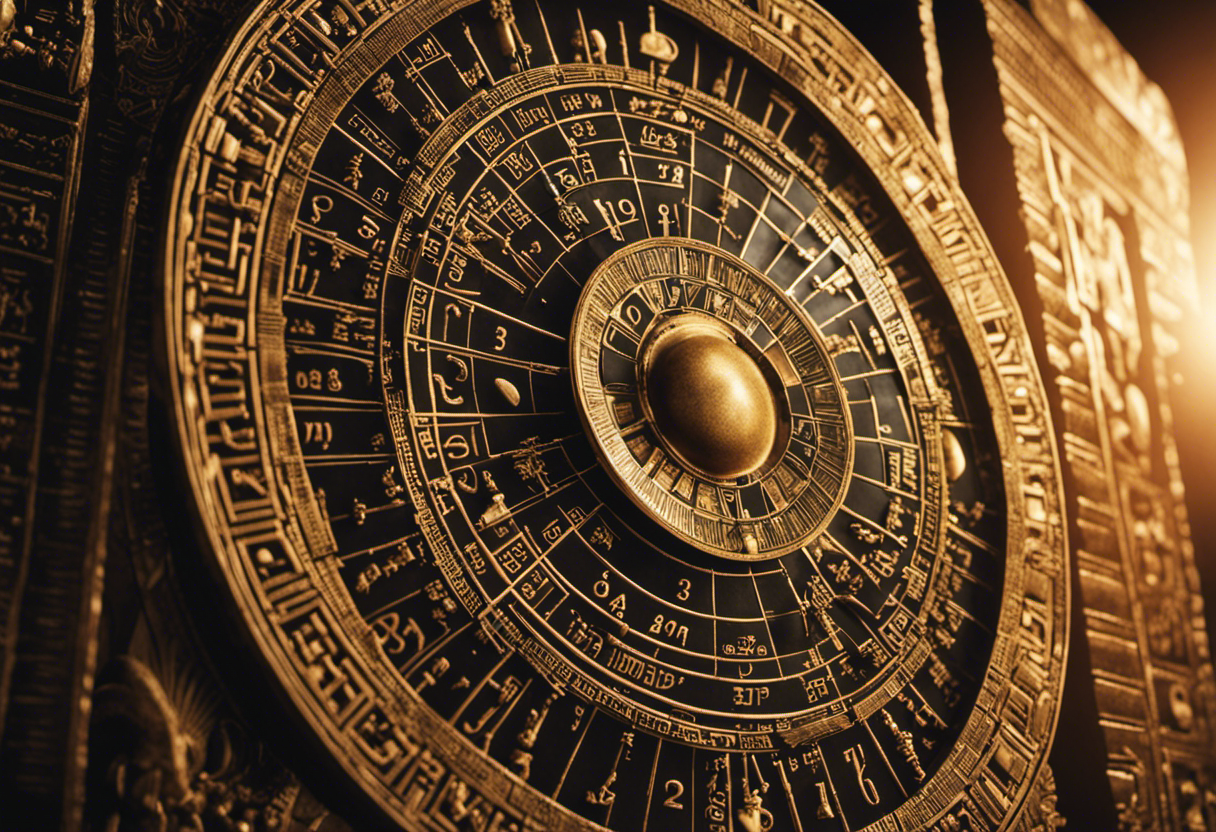

The evolution of the calendar system can be traced back to ancient civilizations such as the Sumerians and the Egyptians. These early civilizations relied on astronomical observations to develop a timeline for their calendars.
The Sumerians, who inhabited Mesopotamia around 4,000 BCE, were one of the first civilizations to develop a calendar based on the lunar cycle. Their calendar consisted of 12 lunar months, with each month beginning at the first sighting of the crescent moon.
Similarly, the Egyptians developed a calendar system around 3,000 BCE, which was also based on astronomical observations. Their calendar, known as the Egyptian civil calendar, consisted of 12 months of 30 days each, with an additional five or six days at the end of the year to account for the discrepancy between the lunar and solar cycles.
These early calendar systems laid the foundation for the development of more sophisticated calendars, such as the Babylonian calendar, which emerged around the 2nd millennium BCE.
Overall, the development of the calendar system was heavily influenced by the astronomical observations made by ancient civilizations.
Changes and Adaptations in the Babylonian Calendar
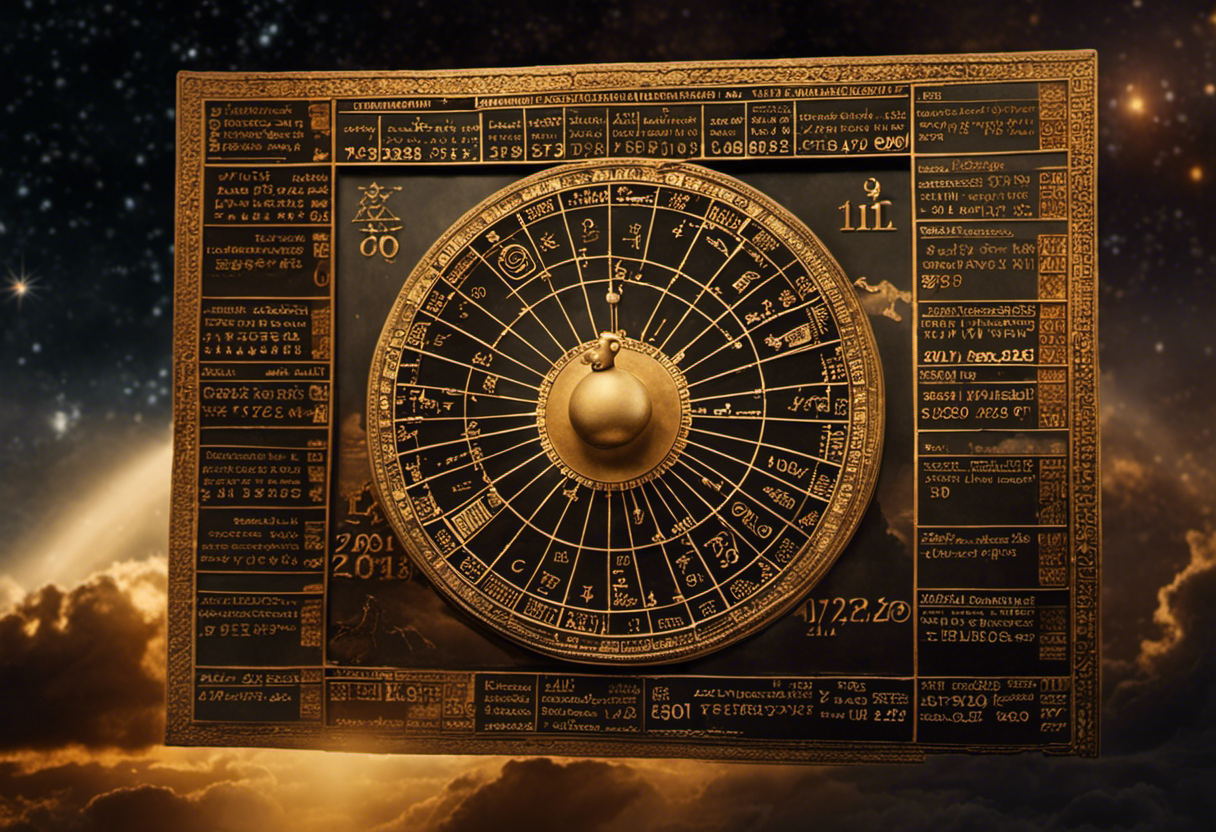

Several changes and adaptations were made to the Babylonian calendar over time to align it more accurately with the solar year and improve its effectiveness as a timekeeping system.
These changes in calendar calculations had a significant influence on religious practices in ancient Mesopotamia.
-
Precision: The Babylonians initially used a lunar calendar consisting of 12 months, with each month starting at the first visibility of the new moon. However, this did not align perfectly with the solar year, causing seasonal drift. To overcome this, they introduced intercalary months to synchronize the lunar and solar calendars.
-
Mathematical Calculations: The Babylonians developed sophisticated mathematical techniques to predict astronomical events and make adjustments to the calendar. Their mathematical calculations enabled them to accurately determine the length of the solar year, leading to further improvements in the calendar system.
-
Religious Festivals: The changes in the Babylonian calendar had a profound impact on religious practices. The timing of religious festivals and rituals was closely tied to the calendar, and any discrepancies could affect the perceived favor of the gods.
-
Cultural Significance: The Babylonian calendar played a crucial role in the social, economic, and religious life of ancient Mesopotamia. It provided a framework for organizing agricultural activities, facilitating trade, and ensuring the proper observance of religious ceremonies.
Overall, the changes and adaptations in the Babylonian calendar were driven by a desire for greater accuracy and efficiency, while also recognizing the influence of religious practices on the lives of the ancient Mesopotamians.
The Influence of the Babylonian Calendar on the Ancient World
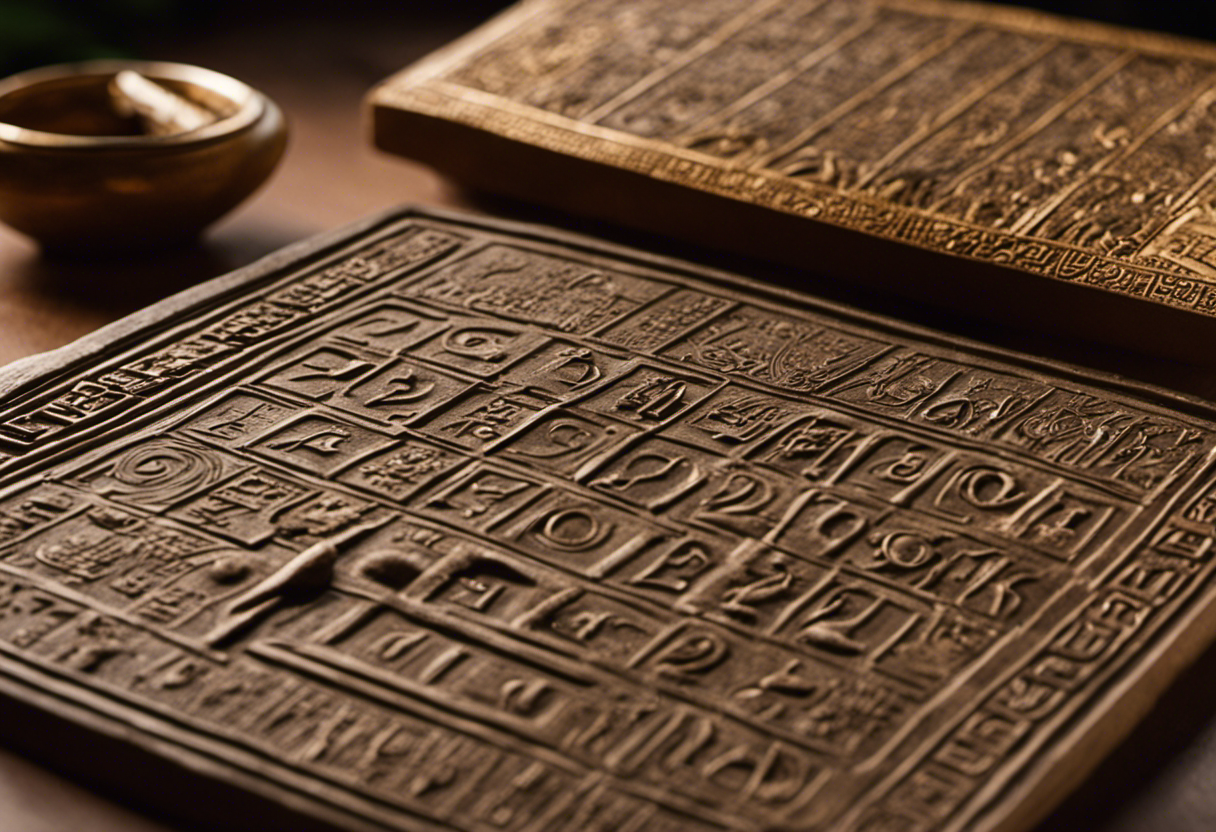

Having shaped religious ceremonies, agricultural activities, and trade in ancient Mesopotamia, the Babylonian calendar exerted a profound influence on the ancient world. The Babylonians were among the first civilizations to develop a systematic calendar, which played a crucial role in their society. This calendar, based on lunar cycles and astronomical observations, not only regulated the annual agricultural cycle but also had significant influences on astrology and religious rituals.
The Babylonian calendar had a direct impact on religious rituals, as it determined the dates of important festivals and ceremonies. The Babylonians believed that the movements of celestial bodies were closely linked to the will of the gods, and by observing the positions of the moon, sun, and stars, they were able to divine the divine intentions and plan their religious activities accordingly. For example, the Babylonian New Year festival, known as Akitu, was celebrated at the spring equinox, marking the beginning of the agricultural year. This festival included various religious rituals and processions, which were closely tied to the Babylonian calendar.
Additionally, the Babylonian calendar greatly influenced the development of astrology. The Babylonians were skilled astronomers and believed that celestial events held significant meaning for human affairs. They developed a system of astrology that linked the positions of celestial bodies to human destinies. The Babylonian calendar provided the foundation for this astrological system, as it allowed them to accurately track the movements of the celestial bodies and make predictions about future events.
Conclusion
In conclusion, the Babylonian calendar, with its origins in the Ancient Mesopotamian civilization, played a significant role in the development of timekeeping systems.
Through its key features, such as the lunar-solar intercalation and the use of astronomical observations, it evolved and adapted over time.
The Babylonian calendar’s influence extended beyond its region, impacting the ancient world and shaping future calendars.
Its rich history and contributions make it a fascinating subject of study for scholars and enthusiasts alike.


